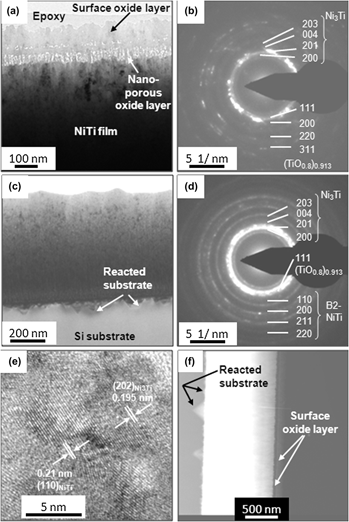Article contents
Influence of annealing on oxidation, microstructure and mechanical properties of Ni-49Ti films
Published online by Cambridge University Press: 27 March 2012
Abstract

Thin films of Ni-49 at.%Ti were deposited by DC magnetron sputtering on silicon substrates at 300 °C. The as-deposited amorphous films were annealed at a vacuum of 10−6 mbar at various temperatures between 300 and 650 °C to study the effect of annealing on microstructure and mechanical properties. The as-deposited films showed partial crystallization on annealing at 500 °C. At 500 °C, a distinct oxidation layer, rich in titanium but depleted in Ni, was seen on the film surface. A gradual increase in thickness and number of layers of various oxide stoichiometries as well as growth of triangular shaped reaction zones were seen with increase in annealing temperature up to 650 °C. Nanoindentation studies showed that the film hardness values increase with increase in annealing temperature up to 600 °C and subsequently decrease at 650 °C. The results were explained on the basis of the change in microstructure as a result of oxidation on annealing.
- Type
- Articles
- Information
- Copyright
- Copyright © Materials Research Society 2012
References
REFERENCES
- 3
- Cited by


